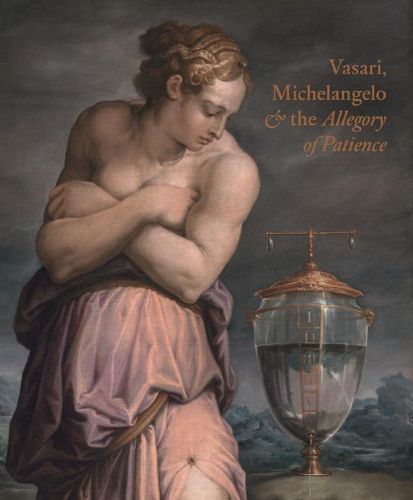Readings Newsletter
Become a Readings Member to make your shopping experience even easier.
Sign in or sign up for free!
You’re not far away from qualifying for FREE standard shipping within Australia
You’ve qualified for FREE standard shipping within Australia
The cart is loading…






This book recounts the exciting rediscovery of Giorgio Vasari’s painting Allegory of Patience, painted in 1551 52 for the Bishop of Arezzo, Vasari’s hometown. The painting was conceived in Rome with the aid of Michelangelo, as many surviving letters reveal. The work will be on view to the public at the National Gallery, London, through 2023. The monumental figure of a woman, life-sized, with arms crossed, watches time run down. The passing of time is symbolised in the drops that fall from an antique water clock beside her, gradually wearing away the stone on which she rests her foot. The Bishop of Arezzo regarded patience as the key to his career and achievements, and wished it to be represented in a picture. Vasari consulted his contemporaries and fellow humanists as well as the great sculptor Michelangelo when deciding what form it should take. The image represents more exactly the Latin tag ‘diuturna tolerantia’ (daily tolerance). The painting quickly became famous in its time and numerous copies were made of it
but not until now has the original emerged. Thanks to letters between those involved, the painting and the process of its creation are richly documented, and in particular provide insights and quotations about picture-making from Michelangelo. The book carries full documentation of the work and its known copies, some of which can be traced to leading patrons in Renaissance Italy. It also examines Vasari’s own autograph technique and artistic aims. 30 illustrations
$9.00 standard shipping within Australia
FREE standard shipping within Australia for orders over $100.00
Express & International shipping calculated at checkout
This book recounts the exciting rediscovery of Giorgio Vasari’s painting Allegory of Patience, painted in 1551 52 for the Bishop of Arezzo, Vasari’s hometown. The painting was conceived in Rome with the aid of Michelangelo, as many surviving letters reveal. The work will be on view to the public at the National Gallery, London, through 2023. The monumental figure of a woman, life-sized, with arms crossed, watches time run down. The passing of time is symbolised in the drops that fall from an antique water clock beside her, gradually wearing away the stone on which she rests her foot. The Bishop of Arezzo regarded patience as the key to his career and achievements, and wished it to be represented in a picture. Vasari consulted his contemporaries and fellow humanists as well as the great sculptor Michelangelo when deciding what form it should take. The image represents more exactly the Latin tag ‘diuturna tolerantia’ (daily tolerance). The painting quickly became famous in its time and numerous copies were made of it
but not until now has the original emerged. Thanks to letters between those involved, the painting and the process of its creation are richly documented, and in particular provide insights and quotations about picture-making from Michelangelo. The book carries full documentation of the work and its known copies, some of which can be traced to leading patrons in Renaissance Italy. It also examines Vasari’s own autograph technique and artistic aims. 30 illustrations